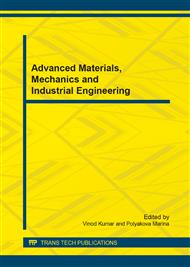p.206
p.210
p.215
p.219
p.224
p.229
p.233
p.239
p.244
Simple Engine Exhaust Temperature Modeling and System Identification Based on Markov Chain Monte Carlo
Abstract:
Even though actual composition of engine exhaust gases varies across diverse types of engines, such as gasoline, diesel, gas turbine and natural gas engines, engine exhaust temperature is always a major factor with strong impact on emission levels and catalytic converting efficiency. For spark ignition engines, exhaust temperature depends on various engine parameters, such as engine speed, engine load, A/F ratio, intake air temperature, coolant temperature and spark timing, etc. Due to complexity, it is impossible to share a unique analytical model of engine exhaust temperature. Instead, it is mostly modeled as a complicated nonlinear system. The model complexity increases significantly however accuracy cannot be guaranteed. On the other hand, a simple linear model with accurate system identification could serve as a versatile alternative to represent the engine exhaust temperature, while engine parameters are subject to model identification to be adaptable across different types of engines. Combination of linear functions in terms of dominant engine parameters of engine speed and engine load is used for exhaust temperature modeling. To identify optimal parameters, Markov Chain Monte Carlo (MCMC) is applied. The discrete-time Markov chain is introduced where the stationary probability replaces posterior density in Monte Carlo integration for numerical integration. Compared with the high order nonlinear approaches, low computation cost is involved in the simplified model. Good agreement between the model prediction data and testing results is observed. The approach could be easily extended to other types of engines.
Info:
Periodical:
Pages:
224-228
Citation:
Online since:
July 2014
Authors:
Price:
Сopyright:
© 2014 Trans Tech Publications Ltd. All Rights Reserved
Share:
Citation:


